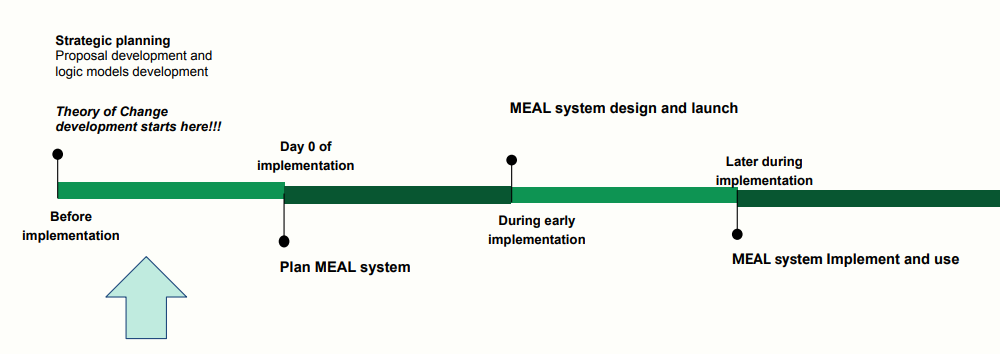A quick introduction to Theory of Change for M&E practitioners
This is a short introduction to the Theory of Change, also written as ToC, covering:
- Understanding the Theory of Change
- The formula to write a Theory of Change
- Steps for developing a Theory of Change
For a complete presentation and more details, make sure to watch the Webinar Series “From Theory of Change to database design”.
This article is also available in French and Spanish.
If you are looking for a platform to centralize and standardize data collection and analysis for your projects, then try a database template in ActivityInfo or contact us for a customized demo.
Understanding the Theory of Change
The Theory of Change describes:
- The logical flow between a key problem and its root causes
- The long‑term change it seeks to achieve in response to the key problem
- What needs to happen in order for this change to occur
As a tool, it supports practitioners addressing assumptions about change that can often be side-lined. It also forces them to detect and highlight knowledge gaps so as to revisit them over time.
The Theory of Change is needed because:
- It helps articulate and justify a project’s logic, making it easier to work with the strategic objectives and intermediate results we seek to achieve
- It supports project teams and their cooperation
- It facilitates internal learning and communication of the project’s goals and objectives to other stakeholders
Source: Practical Guidance on Developing a Projects Theory of Change by CRS

The formula for Theory of Change
To write a Theory of Change, you can follow the formula:
If we do X and Y hold true, then we will achieve Z because A, B, and C.
Where:
- X: long-term change preconditions that need to be addressed by the intervention; to identify them, we conduct gap analysis during the initial assessment
- Y: assumptions that the intervention will not directly address but we acknowledge that are critical for the achievement of the long-term goal, (e.g. Context factors, Results by other actors, etc.)
- Z: the long-term change for the core problem
- A, B, and C: evidence that proves the hypothesis holds true
Example:
- If we enable refugees to enter the local labor market and generate income (X)
- And the government provides work permits based on refugee status (Y),
- Then refugees will be integrated (Z)
- Because studies have shown that accessing the labor market is an enabling factor of integration (A,B,C).
Source: Practical Guidance on Developing a Projects Theory of Change by CRS
Steps to develop the Theory of Change
- Use assessment data to identify the core problem and causes.
- Identify how causes lead to the problem and assumptions that may affect this.
- Decide what intervention is needed and specify the causes to address.
- Produce the Theory of Change and then transform it into a Results Framework.
Tip: Ensure that relevant stakeholders are heard and involved and treat it as a living document, go back and revise.
Source: Practical Guidance on Developing a Projects Theory of Change by CRS